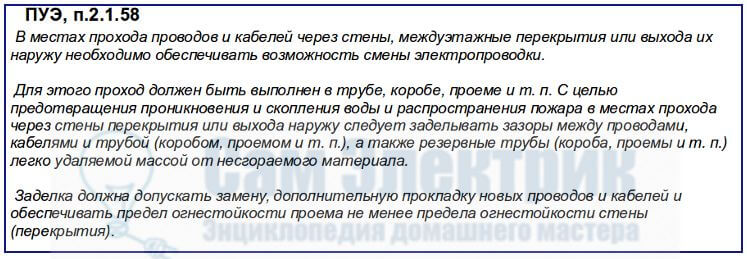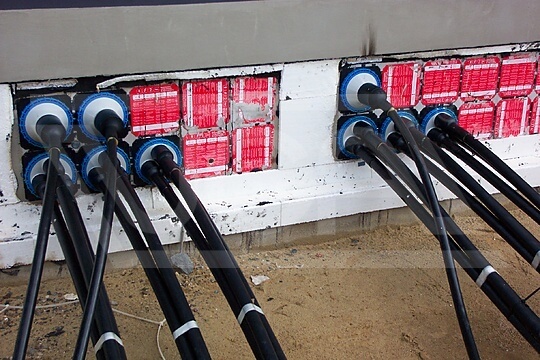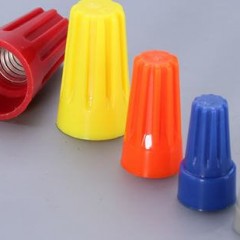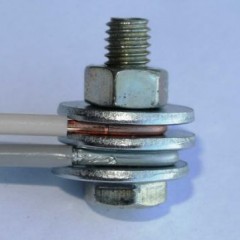How to seal a cable entry - 7 effective ways
What are the norms and requirements?
In normative documents PUE Chapter 2.1. Clause 2.1.58 and SNiP 3.05.06-85 describe the requirements for cable passages:

According to the above requirements, it turns out that the cable entry in the building must be able to retain water, not support combustion and prevent the spread of fire. With all this, be able to re-replace the cable or wire, if necessary.

Sealing methods
To seal the input in a private house or cottage, fire polyurethane foam is most often used, evenly distributing it in the pipe around the cable. After hardening, the mounting foam is cut off and partially tamped by pressing it into the pipe. The resulting recesses are plastered with cement mortar. An example of such a cable line sealing option is provided in the photo below:
You can also try to use the old-fashioned method: rags cut into thin rags, liquid cement mortar and a rag of rags plentifully moistened with it, rammed with a wooden stick into the gap between the cable and the pipe.
Another commonly used method is the use of sealant, which fills the bumps and voids between the hole and the insert sleeve, usually made of fiber cement, metal or plastic. The sealing of the cable entry according to this technique has the advantage that the sealant does not harden, making the inlet hole suitable for repair.
In addition to this, there are specialized professional materials for sealing and manufacturing hermetic bushings on the market. For hermetic passage into the switchboard cabinet or actuator, the cable gland is most often used - PG gland, shown in the photo below:
A large range of models and various sizes make this solution simple and universal. The collapsible design of the cable gland allows you to install it in completely different and convenient for maintenance locations. At the same time, the presence of a rubber sealant and a correctly selected cable size and a pressure seal will allow to achieve high tightness indicators, degree of protection IP54-IP68.
It should also be noted such a method of sealing the cable entry as the use of a sealant, which is concreted in the formwork, and the system cover. In appearance, this method of protection is as follows:
There are also specialized sealants that allow reliable sealing of the cable entry by shrink, inflatable walkways, gloves, etc. All these devices are usually imported, so the cost of this method of protection is quite high. In this case, it is more rational to consider simple, but effective and time-tested options.
The video below demonstrates several methods of how to seal a place where a cable line is inserted into a building or a well:
So we looked at ways to seal cable entries. As you can see, there are quite a number of effective options for protecting the vulnerability from moisture. We hope the information provided was useful and interesting for you!
We also recommend reading:













